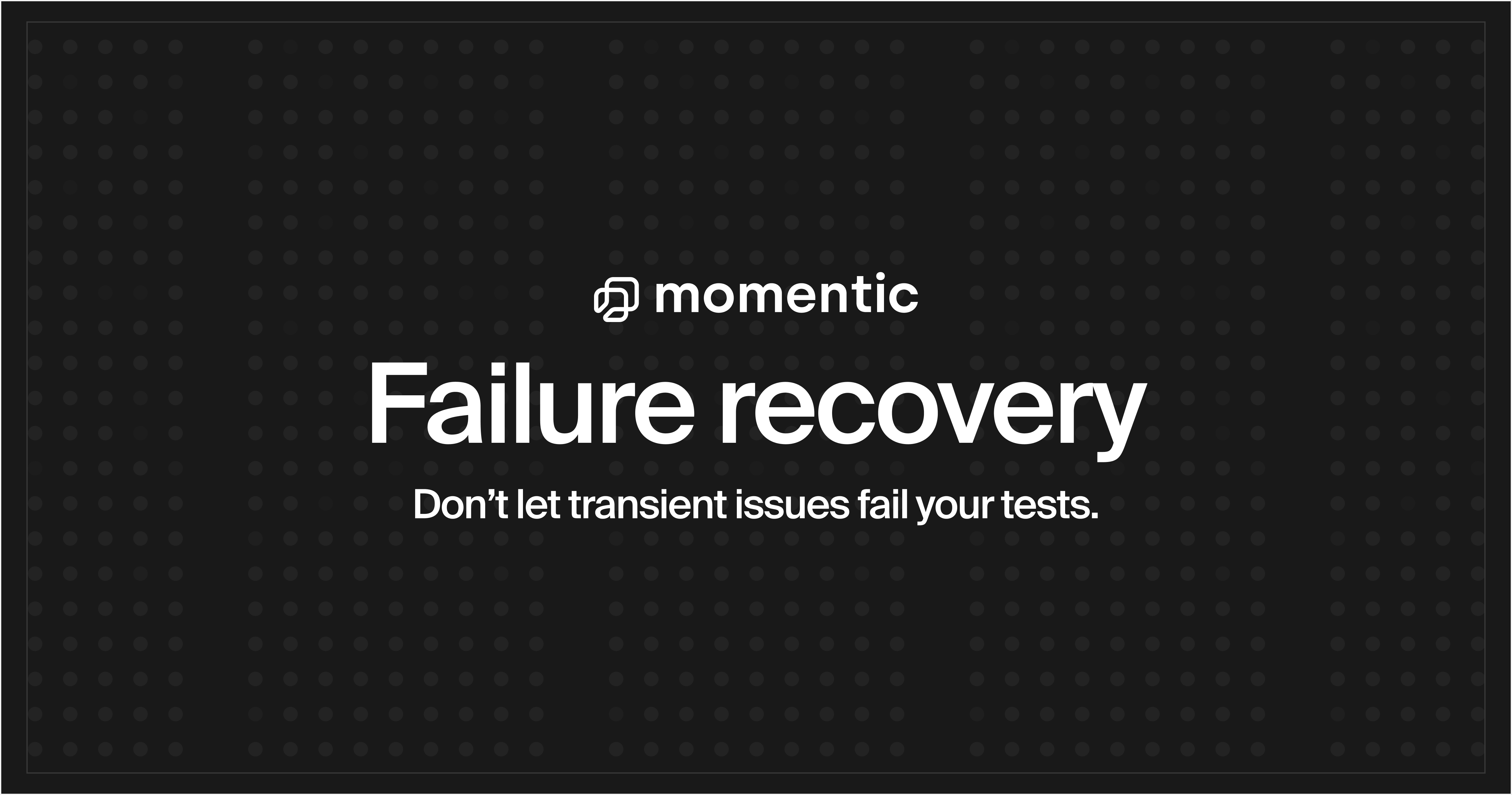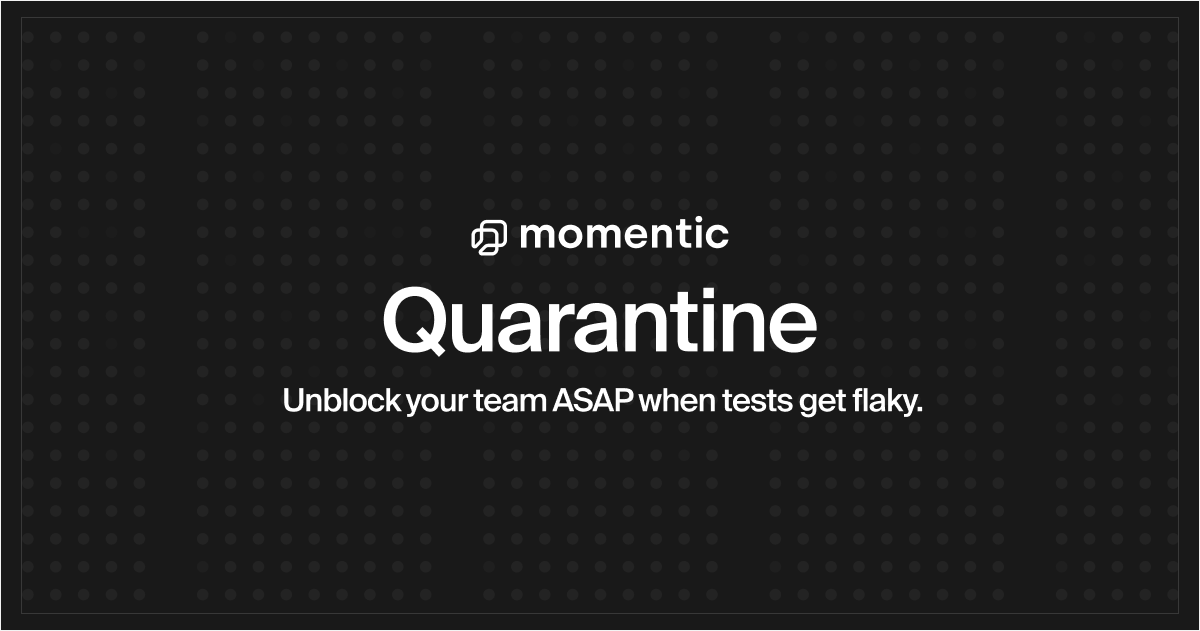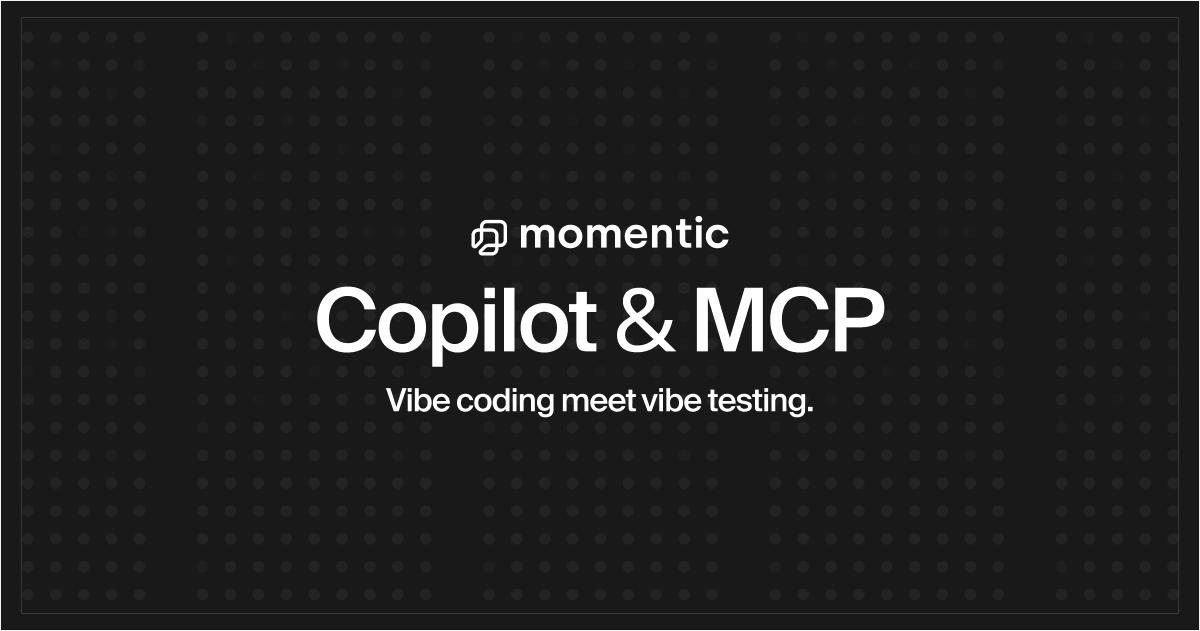Blog
Thank you! Your submission has been received!
Oops! Something went wrong while submitting the form.

August 26, 2025
Momentic Momentum 1: Wrap up
08
/
26
/
2025
News

August 22, 2025
Introducing Mobile
08
/
22
/
2025
News

August 21, 2025
Introducing Failure recovery
08
/
21
/
2025
News

August 20, 2025
Introducing Suggestions & our GitHub app
08
/
20
/
2025
News

August 19, 2025
Introducing Quarantine
08
/
19
/
2025
News

August 18, 2025
Introducing Copilot and local MCP server
08
/
18
/
2025
News